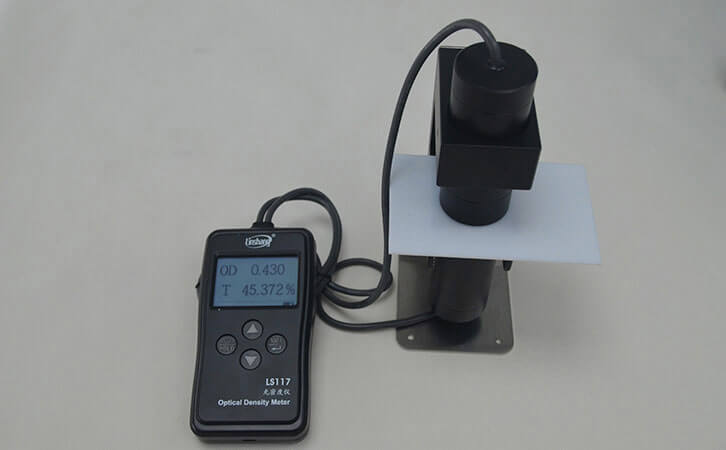Why Do We Use Optical Density Meter?
When we measure the light transmittance of the opalescent material, we will find that when the ordinary optical density meter measures the opalescent material, the test data is found to be inaccurate. We recommend the opalescent material optical density meter. So why should we use a special optical density meter to measure the transmittance of opalescent materials?
First, let's get to know the factors that affect the transmittance of materials:
The factors affecting the light transmittance of the material are mainly three-points: light reflection, light absorption and light scattering.
1. Light reflection
Light reflection refers to the arrangement of molecular structure, crystallinity, crystallinity, etc. which causes incident light to be reflected from the surface of the polymer to cause loss of transmitted light.
2. Light absorption
When the incident light enters the inside of the dielectric material, the light is blocked in the channel transmission due to the molecular structure composition and the retention is absorbed in the material.
3. Light scattering
When the incident light contacts a rough surface, due to the uneven distribution of the molecular structure or the coexistence of disorder and crystallization. The incident light is neither transmitted nor reflected, but disappears in the form of scattering.
Second, the working principle of ordinary optical density meter and the optical density meter:
After the light hits the surface of the matte material, the light that passes through the matte material spreads out at different angles. Ordinary optical density meter can not receive the scattered light, the test data will be too small. For the LS117 optical density meter which adopt the diffuse transmission principle, the light source probe and the receiving probe are closely combined. The light scattered by the light transmitted through the material will be irradiated onto the opalescent glass at the receiving probe. The inside of the probe uses the principle similar to the integrating sphere. The final probe can receive all the light after passing through the material to ensure the accuracy of the test data.
Due to the different design principles of the instrument and the customer's requirements, when measuring translucent materials or uneven materials with the optical density meter which adopt the parallel light sources. Due to reflection or refraction of light, etc. The measured data will be smaller than the real data.
- LS117 Optical Densitometer Measure Welding Mask Glass
- Companre LS117 Optical Density Meter With Others
- LS117 Densitometer Measure Application
- Difference of LS117 Densitometer and X-Rite 341 Densitometer
- LS117 Transmission Densitometer-Related Knowledge
- The details of LS152 glass light transmittance on-line monitoring device
